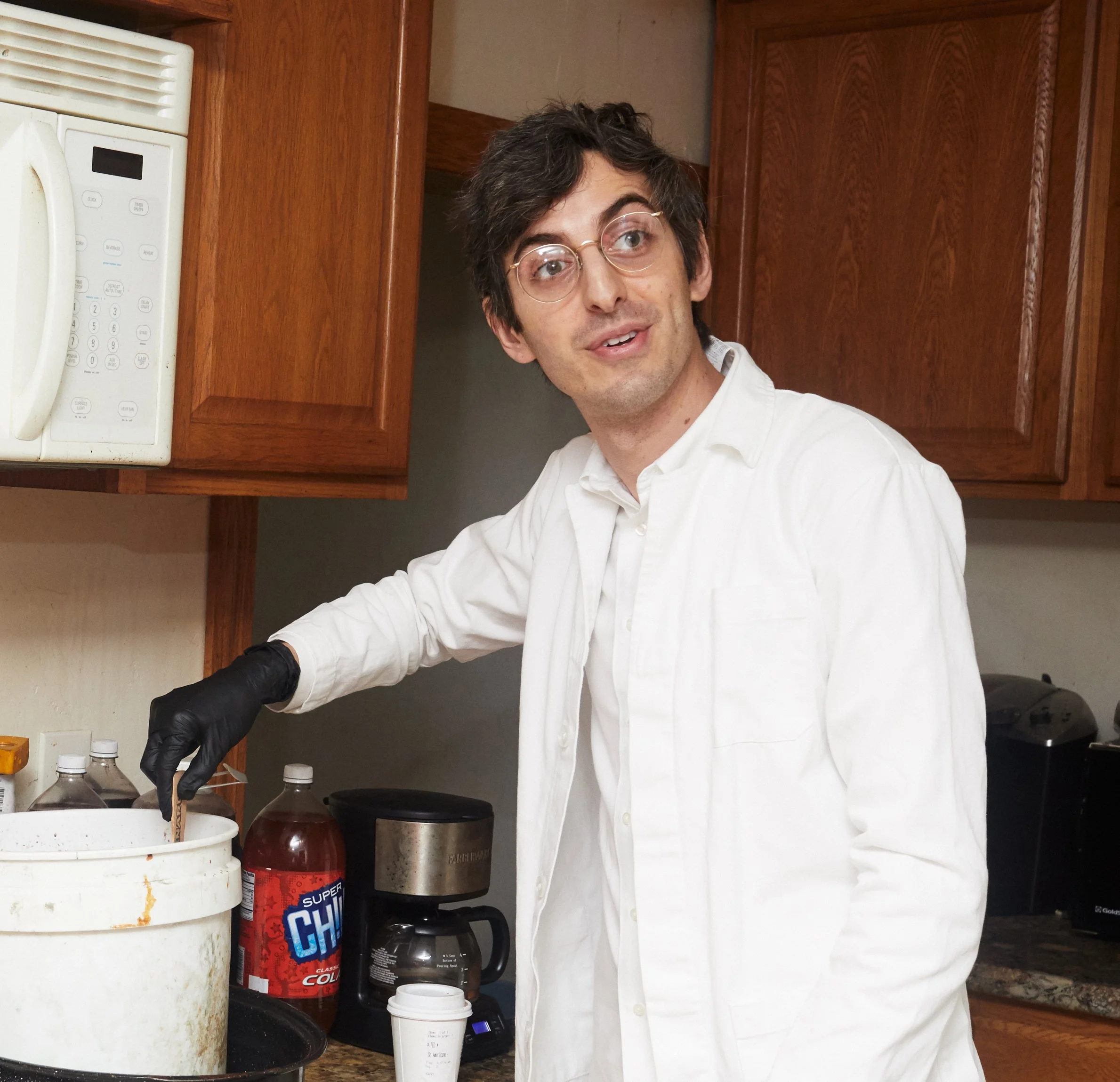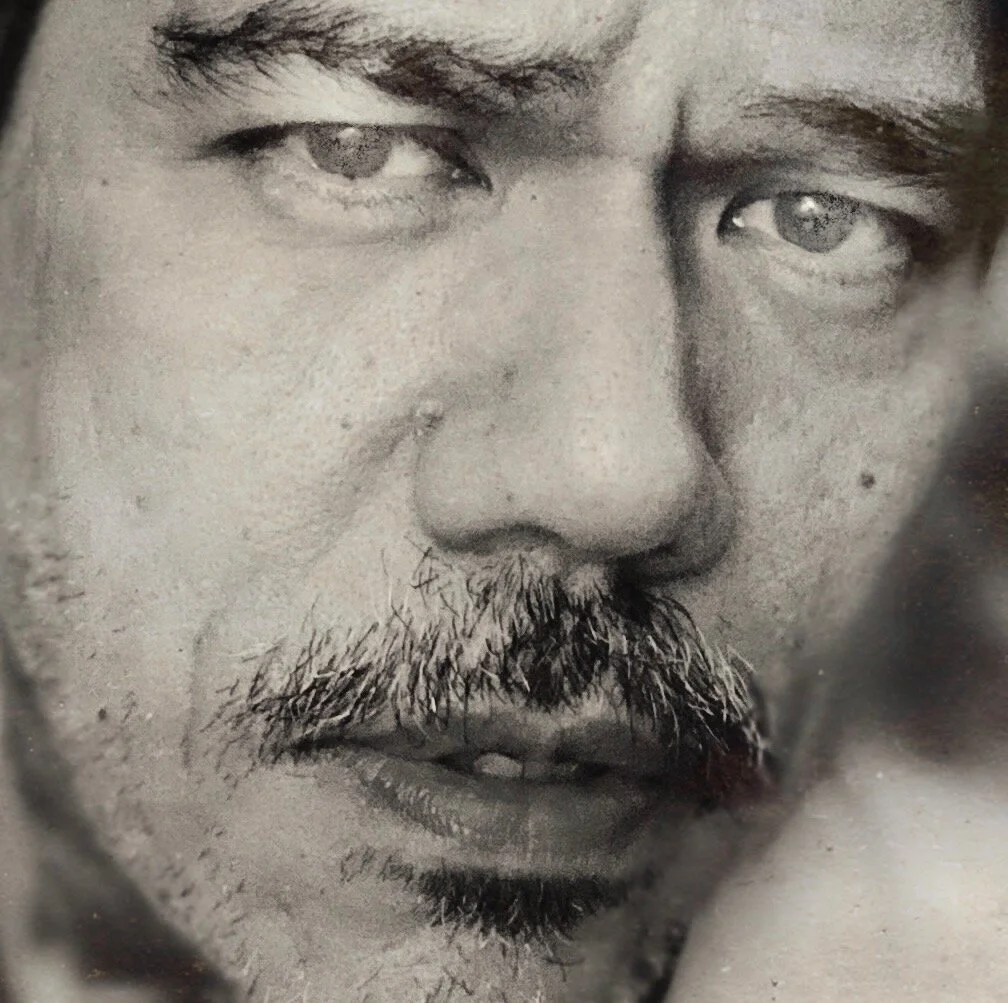Aurel Schmidt, 30, MWF, Canadian living in New York, lauded artist who has shown around the world and in the most prestigious institutions and yet, by choice and because she is smart, does not have a gallery but instead flies solo and does what she wants, and who executes heavily detailed, lurid, funny, tragic, and expertly drawn pieces, recently visited the far-west Soho office of...
Jamieson Webster, PhD, psychoanalyst, psychotherapist, and author of the invigorating book The Life and Death of Psychoanalysis, who is both forward-thinking and versed in tradition and focuses in her private practice on the treatment of children and adolescents as well as counseling adults on issues of anxiety, loss/grief, and relationships while at the same time writing on topics such as love and shame, Jacques Lacan, and—along with her husband, the philosopher Simon Critchley—Hamlet.
Aurel came to Jamieson so that Jamieson could, at the suggestion of this magazine, administer to Aurel the House-Tree-Person test, which is an arguably outmoded diagnostic tool in which the tested makes one drawing of each of the three titular subjects. Is a drawing a projection of one’s inner world? That’s the hope of the test. Is the mind far more complicated than such a simple process can assess? Probably certainly.
But, still, it’s fun to try. Once settled across from each other, Aurel took her time while using crayons on white paper. After the drawings were completed, she moved to the requisite shrink’s couch, where Jamieson asked her a series of scripted questions. What follows is a slightly edited transcript of that talk. Along with each drawing, Jamieson has also offered an assessment based on the guidelines of the 350-page House-Tree-Person manual. Please remember that these assessments, while adhering to the gospel of the test, are not necessarily the conclusions that Jamieson would draw in her own therapeutic relationships with her clients. Also note that Jamieson does not administer the H-T-P in her professional practice, and that we subjected Aurel to a slightly simplified version of the traditional H-T-P drawing process.
HOUSE
Jamieson: How many stories does the house have?
Aurel: Just one.
It looks like there could be one or two. Is there an upstairs?
Oh, stories. I thought you meant stories. [laughs]
[laughs] Stories as in floors.
It has two stories then. It’s a real house, in real life.
It’s a house that you know?
It’s my house. I own this house. It’s in Kamloops, British Columbia. It’s got a balcony and some spiderwebs under the porch, and rock walls. It’s got a pool that’s green, and log siding. It’s kind of chilly so there’s a little fire going, and some smoke. It’s got a tin roof that’s also green. There’s a garden over here and some grass.
Which room does the chimney go into?
The fireplace downstairs.
How long have you lived there?
I’ve only lived there for three months and three weeks. It’s new. But my parents live next door, so this area that it’s in is an area that I have deeply rooted in my childhood mind.
You bought a house next door to your parents?
Yes. A trailer. It’s a double-wide trailer.
Tell me about the door.
It’s supposed to be over here in reality [gestures to the drawing], but when I
started drawing it… I don’t know, it
just looks nice.
And the black on the door is...
It’s the horse doorbell. It’s a bell that you ring that looks like a horse.
I noticed that when you were finishing the drawing, you added the black at the bottom—the cobwebs.
Yeah. I guess that it makes it a more interesting picture because you can see the dark stuff hidden under the house. I guess I was cheating a little. It’s good to have the dark side underneath the house. And there are a lot of spiderwebs under there. It’s really cool.
What’s the weather like in this drawing?
It’s crisp.
Where’s your room?
The whole house. It’s all mine. [laughs]
It’s one big room?
Well, I didn’t draw it correctly. This is like an idea of the house but it’s not the correct layout of the house.
You seemed happier with your drawing once you started doing the landscape.
When I was growing up, through my whole life, even into my adulthood… you know how sometimes you have a landscape that you go back to? There are different places you can go where it’s always the same. And it’s not necessarily what’s really there. Well, I would always have dreams where bad things would be happening, like my parents would be coming after me, and I would run across the street and down into this field and escape. I’d be kind of lucid dreaming. And that field was freedom. In the dream, that’s where I was safe. There was never anything bad there. It was also the place where, if I could get there, I knew I was dreaming. And I didn’t know I was ever going to buy that property in real life, but that’s the property that I bought. So it’s kind of cool. Like, I own that field now. It’s 25 acres. There’s a big field, and the house, and more field. And then it goes down to a river. It’s on a cliff.
TREE
Let’s talk about your tree.
This is a pine. You might want to know that I just got back from three months in Canada, so everything is about Canada. So this is a pine, kind of at night, kind of not. There are magpies in the tree, and that’s a vulture on the top.
What’s a magpie?
It’s a bird that most people consider a pest, but they’re really cool. They’re black and white and big, with a long tail, and they steal stuff—they steal garbage—and they make a lot of noise. I have tons of them, like 30 at a time, just hanging on the property.
They steal your garbage?
They’re mischievous. And that’s a turkey vulture on the top. You can see it has a red head. And, I don’t know, that’s the story of the tree. It’s kind of spooky.
Where is this tree?
Probably on my property. [laughs]
Is it an old or a young tree?
It’s pretty old. I mean, it’s pretty big. I don’t know how fast pine grows, but this is probably at least 30 years old.
What’s going on here, at the bottom?
It’s kind of nighttime. It’s just showing shadows and scariness.
Does the tree look more to you like a man or a woman?
A man. It’s phallic. Pointy. Red head at the top. Don’t you think?
I don’t know…
I mean, it’s a bit pear-shaped, like a woman. I guess it could be both. Maybe the top is more masculine and the bottom is more feminine.
It’s messier on the bottom.
I just wanted it to look good. I knew it would look cooler if it was messier. And also I get really bored drawing trees.
And what’s the weather like in this one?
Crisp, again.
Does the tree remind you of anything other than a tree?
It’s a little spooky. Like, haunted. Like Antichrist. Do you know? Like that movie.
Mm-hmm.
A little like that. A little bit. The vulture is a scavenger. He’s watching over the landscape from the top.
“Nature is Satan’s church.”
Nature is pretty brutal. It’s shocking
how brutal it is and how many things are dying or dead all the time. It shows how fast things disintegrate and die.
It’s really kind of awful. But it’s cool. It’s just scary, I guess. It makes you think of your own death.
PERSON
How old is she?
Thirty.
Tell me about her.
It’s me. [laughs] It’s me, drunk, waving at some friends.
What were you thinking about when you were drawing her?
I’ve been thinking that I’m struggling thinking about which things I want to prioritize. Part of me is still caught up in social life and wanting to be with my friends and that can be destructive in the face of wanting to get a lot of work done. So this is partially about wanting to have fun and it’s partially monstrous because I’m not sure. It’s kind of out of control. Maybe this is about being afraid of drinking because then I’d have a hangover. I guess it’s something I have a weird relationship with. It’s something that I’m not sure I want in my life, but it’s something that still has some control over me.
If you separate what you’re thinking about right now from the figure in the picture, can you tell me what she’s thinking?
She’s probably like, “Does anyone have any coke?” And she’s probably kind of horny and happy and sloppy. She’s excited to see her friends.
You didn’t put your glasses on her.
Usually when I draw pictures of myself, I’m naked and there are no glasses. I don’t see my glasses, because I’m wearing them. So I don’t always think to draw them in. And I don’t necessarily want to wear glasses or think of myself as a glasses-wearing person. My drawings will be naked because it’s supposed to be my inner self, not my physical self in real life. She’s a symbol of my self—not really my self.
You drew her eyes first. I thought that they were going to be breasts.
Really? I guess eyes can look like breasts. If the boobs are round, with black dots for nipples.
Is this person well or unwell?
Well.
What is it about her that gives you that impression?
She’s happy. She’s up. She’s waving. She’s smiling.
What is the weather like in the picture?
Probably dank. Dark and dank, like at a bar.
And what does this person need most?
Love.
Originally published in Apology #1, Winter 2013















